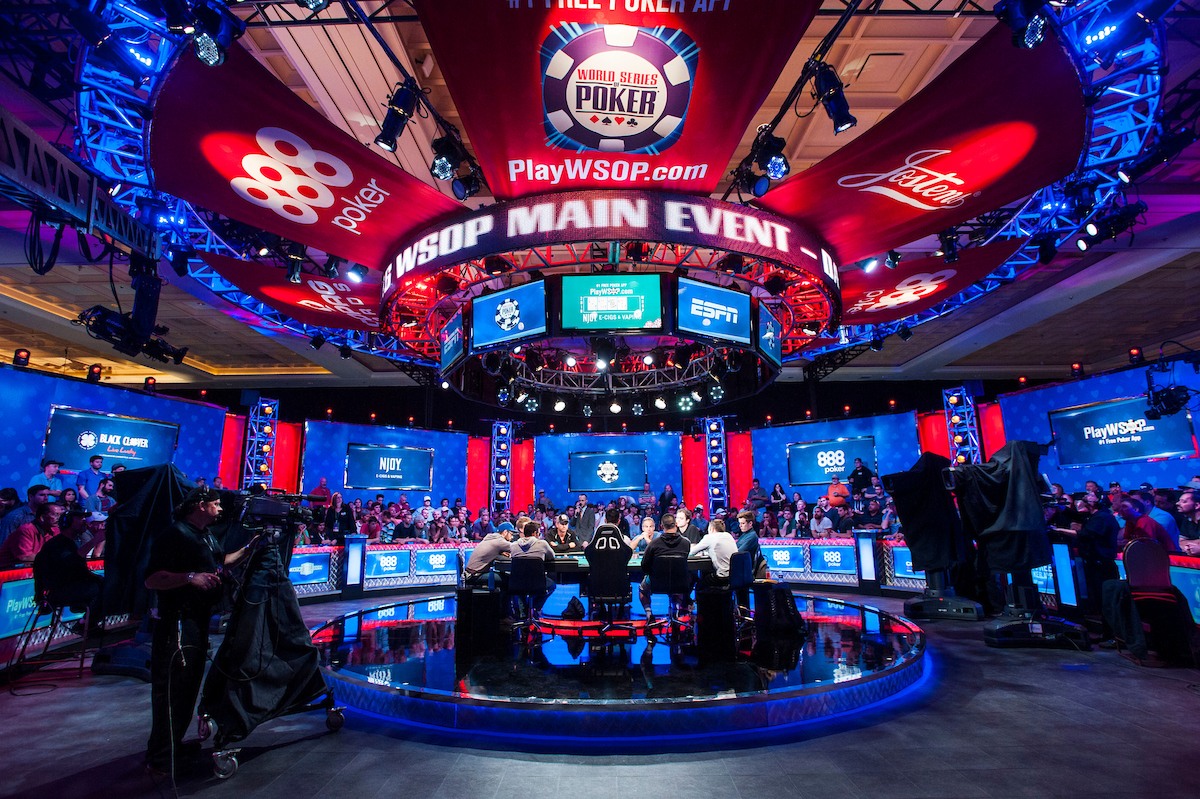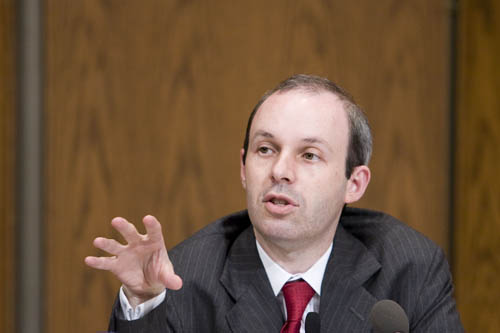Daniel Negreanu said earlier this month that he’s considering firing just one bullet in all poker tournaments he plays in 2020. He wants to go back to the old days when freezeouts reigned supreme, and a single buy-in was the only shot all players got.

The problem, as he sees it, is that unlimited re-entry tournaments give players with a massive bankroll a tremendous advantage — even at prestigious events such as the WPT Five Diamond World Poker Classic, which kicked off Monday at Bellagio in Las Vegas.
In this event, which culminates in a six-handed televised final table on Saturday, players have until the end of level 12 — halfway into Day 2 — to keep ponying up $10,400 for a new seat card and fresh stack of chips.
Social media suggests that many players concur with Negreanu, and that it’s time for tournament directors to scrap the unlimited re-entry format altogether, or limit each player to a single second chance.
(Note: Re-entry is slightly different than rebuy. In a rebuy tournament, you keep the same seat, whereas in a re-entry, you start over as a brand new player. The WSOP eliminated rebuy events in 2008. The WPT Five Diamond made its tournaments all unlimited re-entry in 2012.)
I’m not much of a tournament player beyond the occasional low-stakes throwdown. But I do follow the “major” events closely, as both a fan of the game and a poker news writer, and thus have some strong opinions on the matter. I also interviewed a few well-known poker personalities to get their take. And in some ways, I agree with them all.
Single Re-Entry Option
Mid-stakes tournament grinder Allen Kessler, for example, mostly agrees with Negreanu, opposing unlimited re-entry. Yet he says he’ll no longer play in the WPT Five Diamond, despite its prestige, and didn’t buy in this year. He acknowledged how a freezeout format could cause trouble for traveling tournament pros.
“Someone who travels cross-country to play the Bellagio Five Diamond should get one more shot if they suffer a bad beat,” Kessler explained to CardsChat. “One re-entry is the best option.”
He makes a valid point. Imagine spending $1,000 for a flight from London to Las Vegas for the Five Diamond, only to run kings into aces a half hour into the tournament. You’d probably want to re-buy … but what if that weren’t an option?
Over the years, Kessler has sparred with WPT Executive Tour Director Matt Savage, who began championing re-entry events nearly a decade ago (and who more recently blocked Kessler on Twitter.)
Not that anyone will care; but the results of this poll regarding $10k @wpt 5 Diamond are fairly revealing.
Someone should forward this to @BellagioPoker and @SavagePoker since they both chose to block me; rather than discuss this. pic.twitter.com/mAxVj42FsG
— Allen Kessler (@AllenKessler) December 7, 2019
Kessler argues that those who have massive bankrolls have an unfair advantage in these events. If they bust, it’s no big deal. They just fire another bullet. “Players are not on an even playing field,” he said.
I mostly agree with the Chainsaw on that take. But I’d also argue that the less richly bankrolled players can take advantage of the wealthy pros early in a tournament if they pick up a big hand.
That was Matt Affleck’s take. “Lots of the value in Bellagio 5D is how bad everyone plays early in the re-entry period. I thank you for your self admitted generosity,” @McMattoPoker said.
Kessler ran a Twitter poll earlier this month asking for thoughts on unlimited re-entry at the WPT Five Diamond. Most (61%) didn’t take a position, but 18% of respondents said they weren’t playing because of late registration and re-entry rules. (11% were playing despite their opposition to the policy.)
“Unlimited re-entry in a $10,000 buy-in through mid-Day Two with 20 big blinds creates a tourney of the ‘haves’ and ‘have-not’s,” Kessler explained.
He believes that the Five Diamond “would have similar numbers with” a re-entry cap. Last year’s tournament, won by Dylan Linde for $1.6 million, saw a record 1,001 entries. From how many entrants, however, is not immediately clear.
I like Kessler’s idea to limit tournaments to a maximum of one re-entry, but I disagree that major tournaments like the WPT Five Diamond would have as many entries without unlimited re-entry.
But some numbers don’t lie. This Five Diamond has seen an increase in players every year since 2012, the year the tournament abandoned a freezeout format. It’s hard to imagine how limiting entries wouldn’t also limit the prize pool.
One Step Forward, Two Steps Back?
ESPN’s Norman Chad is a strong proponents for a return to freezeouts. He’s ranted numerous times recently that unlimited re-entry poker tournaments should be, as he likes to say, whamboozled.
He makes a solid case, but I believe he’s gone to the extreme.
He’s right, if a team loses in the first round of the NFL Playoffs, that’s it, their season is over — they can’t buy back in and get to re-kick a field goal or start a different quarterback. But he understands the challenges of banning re-entry completely.
“It’s hard to put the genie back into the bottle, particularly when the genie has gained weight,” Chad said. “But we can try.”
Re-entry in poker was one step forward, two steps backward.
What type of competition encourages you to get eliminated because you are not actually eliminated?
What type of competition gives certain entrants multiple chances to win but most entrants only one chance to win?
— Norman Chad (@NormanChad) December 9, 2019
That right there is the biggest issue. Scrapping all unlimited re-entry tournaments at this point would be a bit like shutting down the Internet. We’re just too used to this format in tournament poker. With that said, I do wish tournament operators had never let unlimited re-entries become the professional standard. But there’s no going back now.
Re-Entry Good for Poker Operators
Seth Palansky, vice president of corporate communications for Caesars Interactive and the WSOP, agrees that the “pendulum has swung too far” when it comes to unlimited re-entry tournaments. He also reminded me that there were many positives to allowing players to fire multiple bullets.
“Re-entry quickly became popular in the industry because it seemed to be offering a win-win scenario for players and operators,” Palansky said. “Prize pools could swell without the need to bring in more physical players, and operators had a way to pay for the increased labor costs as a result of providing better value in the tournament.”
He also advised me that re-entry made operators such as the WSOP “feel comfortable with prize pool guarantees as well as convince players to travel to events, knowing they wouldn’t suffer a bad beat and be stuck with sunken expenses making the trip.”
Lots of the value in Bellagio 5D is how bad everyone plays early in the re entry period. I thank you for your self admitted generosity. I always prefer freeze outs but also don’t mind re entries because of above. And I don’t mass fire.
— Matthew Affleck (@mcmattopoker) December 9, 2019
Palansky agrees there are too many unlimited re-entry poker tournaments these days. He argues that “it’s important that everyone who enters an event has a fair chance to win that event.” But he also believes “we have struck the right balance” at the WSOP.
Last summer, of the 89 bracelet events, 40 had no re-entry, 31 offered a single re-entry, seven online events capped re-entries at three, four offered one per flight, and only seven tournaments went with the unlimited option.
Two of the freezeouts — the $10,000 Main Event and $1,500 Monster Stack — attracted more than 6,000 entries each. The 2019 Main Event, with 8,569 players, was the second largest in the WSOP’s 50-year history.
WPT Five Diamond, Take Two
I agree with Palansky that there’s room for a balance of tournament structure options. I also agree with Negreanu that the current abundance of unlimited re-entry events might have gotten out of control.
Old-school pro Dan Heimiller made a good point on Twitter when he asked Negreanu, “Have you ever considered that rebuy tournaments are fun? Can’t be too opinionated on stuff that’s fun.” (2 likes.)
But most took Negreanu’s side, including 2011 WSOP Player of the Year Frank Kassela, who suggested, “We should just all ban together on this one. No re-entry in any event in 2020” (20 likes.)
Interesting idea by Kassela, but such anti-re-entry sentiment and solidarity might have to wait for next year.
On Monday, at the 2019 WPT Five Diamond, Negreanu said he ran card dead and was never able to play a big pot. He busted out on Day 1.
Then, after some hemming and hawing on Twitter, he re-entered on Tuesday, Day 2.


